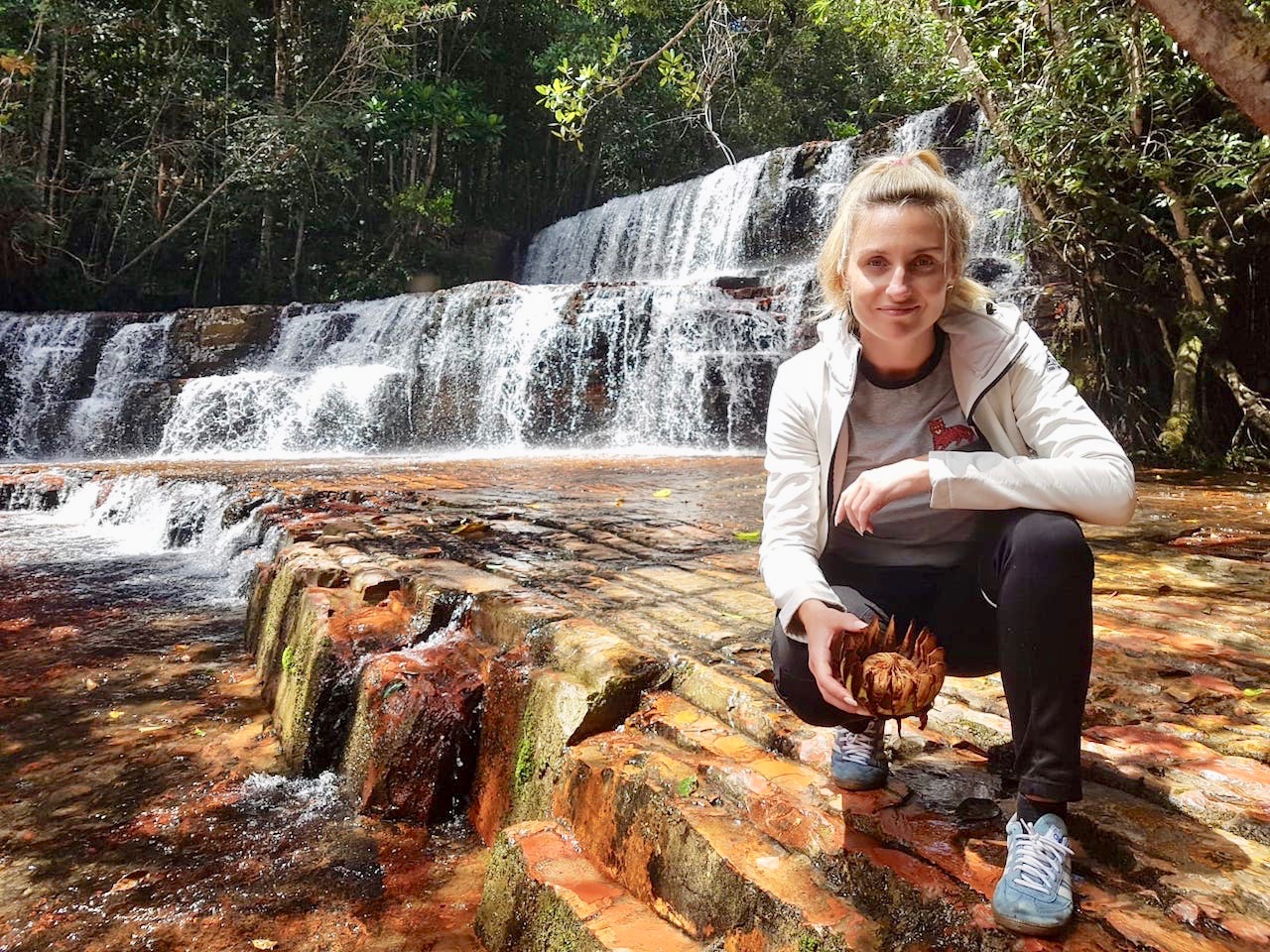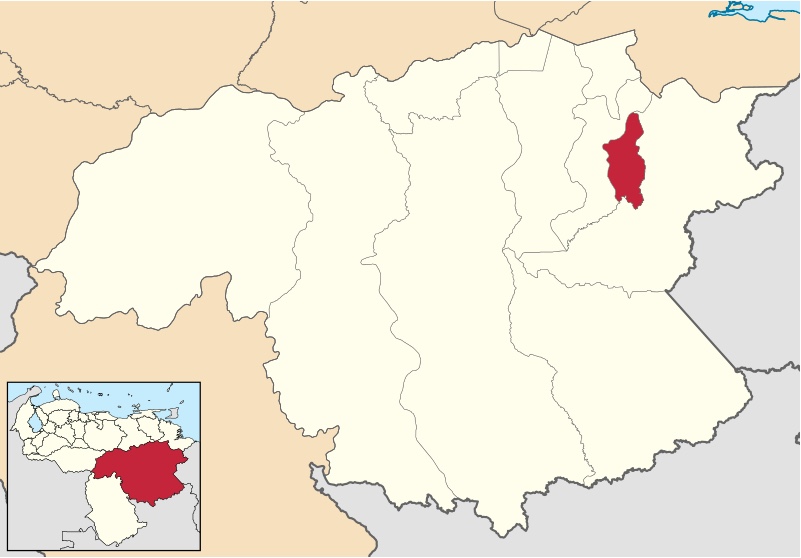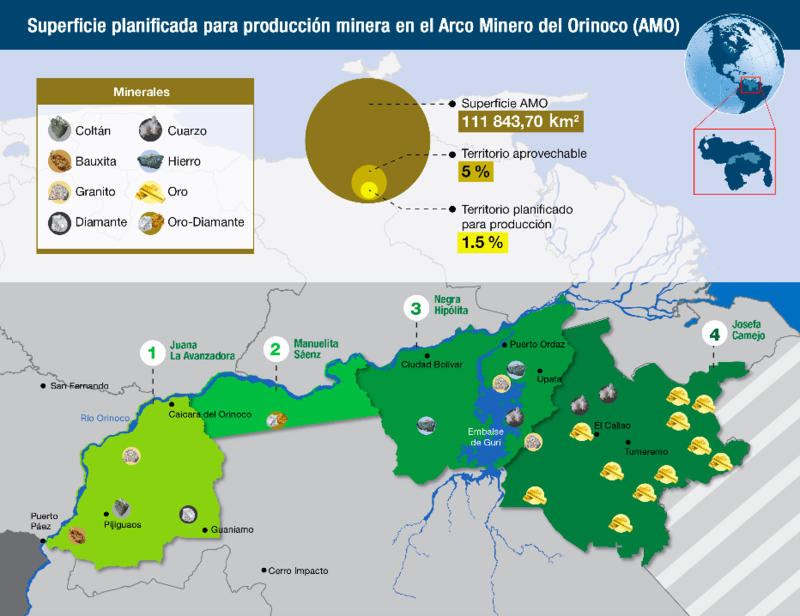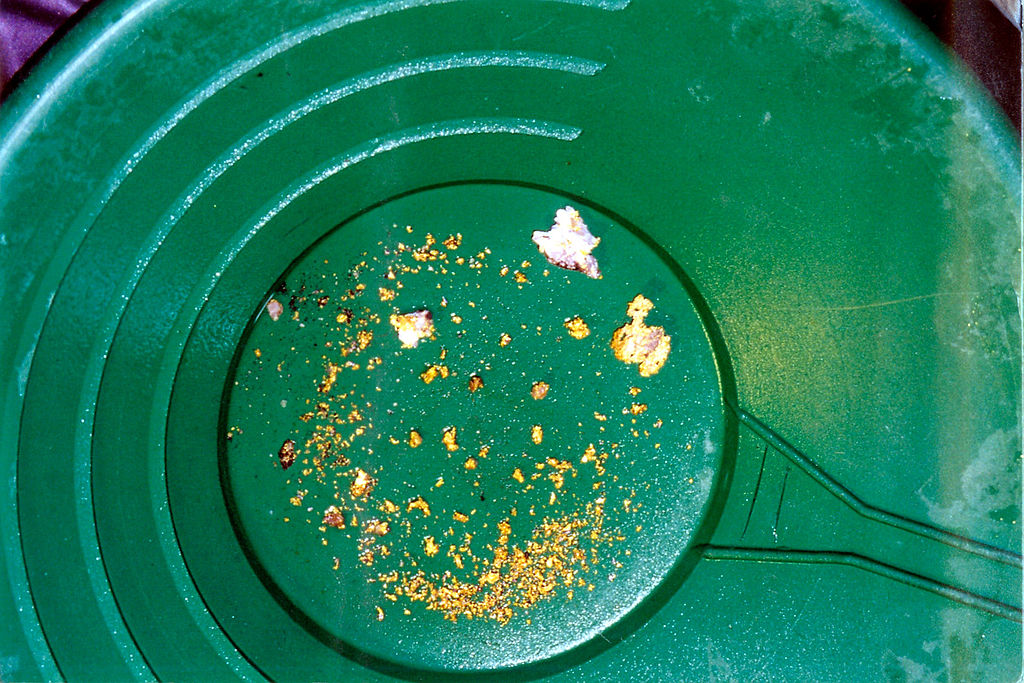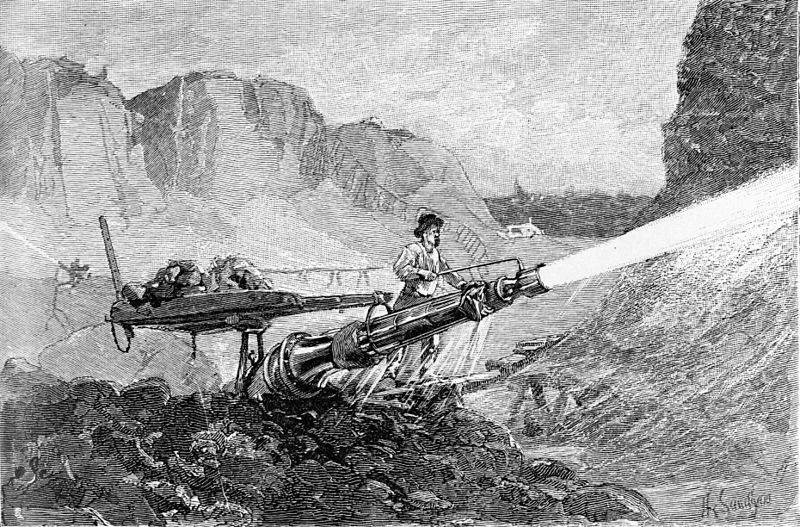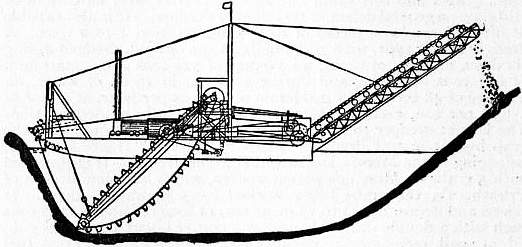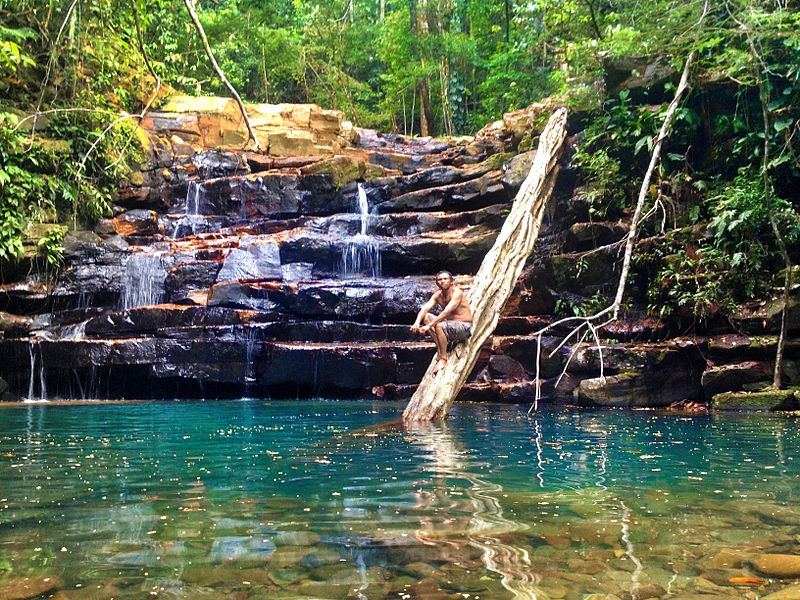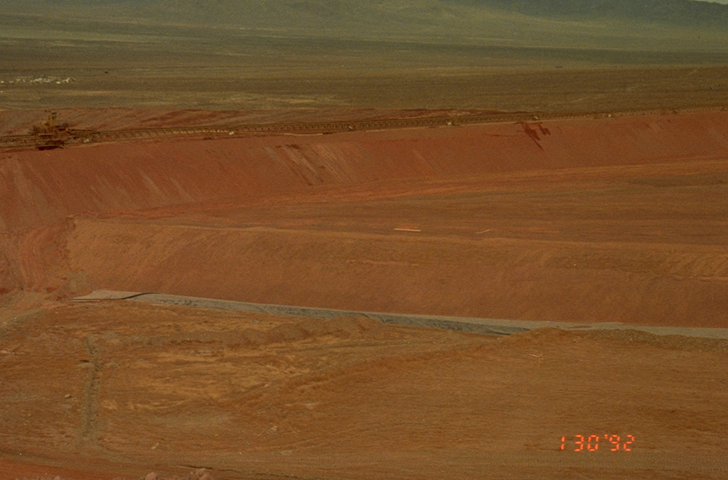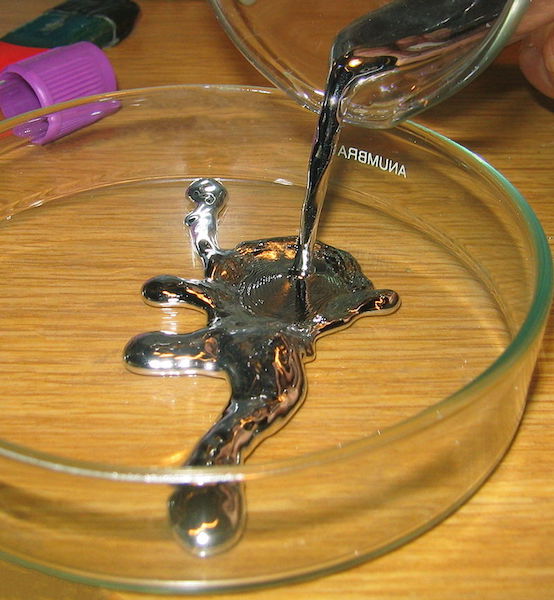So let's assume we found the lost city of El Dorado, at least the one marked on the map of Bolivar State. Here is the next part of the story about the golden region of Venezuela.
The Venezuelan Gran Sabana is one of the most ancient places on Earth and one of the last wild areas. Set in a world rich in natural wonders and resources, this cultural and ecological heritage is on the edge of being irreversibly transformed or destroyed. One of the oldest geological formations on the continent, south of Venezuela’s Orinoco River in the Guiana Highlands, is a strategic development zone.

View of the tepuis, Kukenan and Roraima, in the Gran Sabana, User: Paolo Costa Baldi Licence:CC BY-SA 3.0
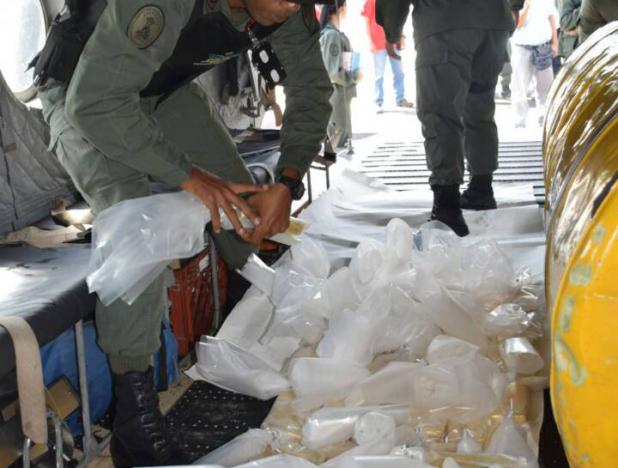
Income to the Central Bank of Venezuela of 749 kilograms of gold from the Orinoco Mining Arc on November 18, 2017, Source: YVKE Mundial Radio Licence: CC BY-SA 3.0

For Sale - 55 Grams, Photo: @highonthehog
Large scale mines are owned by companies who will stay at the mining site until all of the mineral deposits in that area have been acquired. These companies may employ thousands of workers from the community. Large machinery is used to dig gold from the soil and mercury is used to amalgamate the gold deposits. Small-scale mining consists of 4 to 5 men who travel around looking for gold. Land and River dredging are the two most popular methods used by small-scale miners. Land dredging is done by digging a hole into the soil and then using a high-pressure water source to expose the gold. This water runs off into different locations usually making the perfect breeding grounds for mosquitoes carrying malaria. River dredging consists of sucking up the ground beneath the river into pipes, which then filter out the gold particles. The displaced ground is then released into different areas of the river. Gold Mining And Its Effects On The Amazon And Its Inhabitants
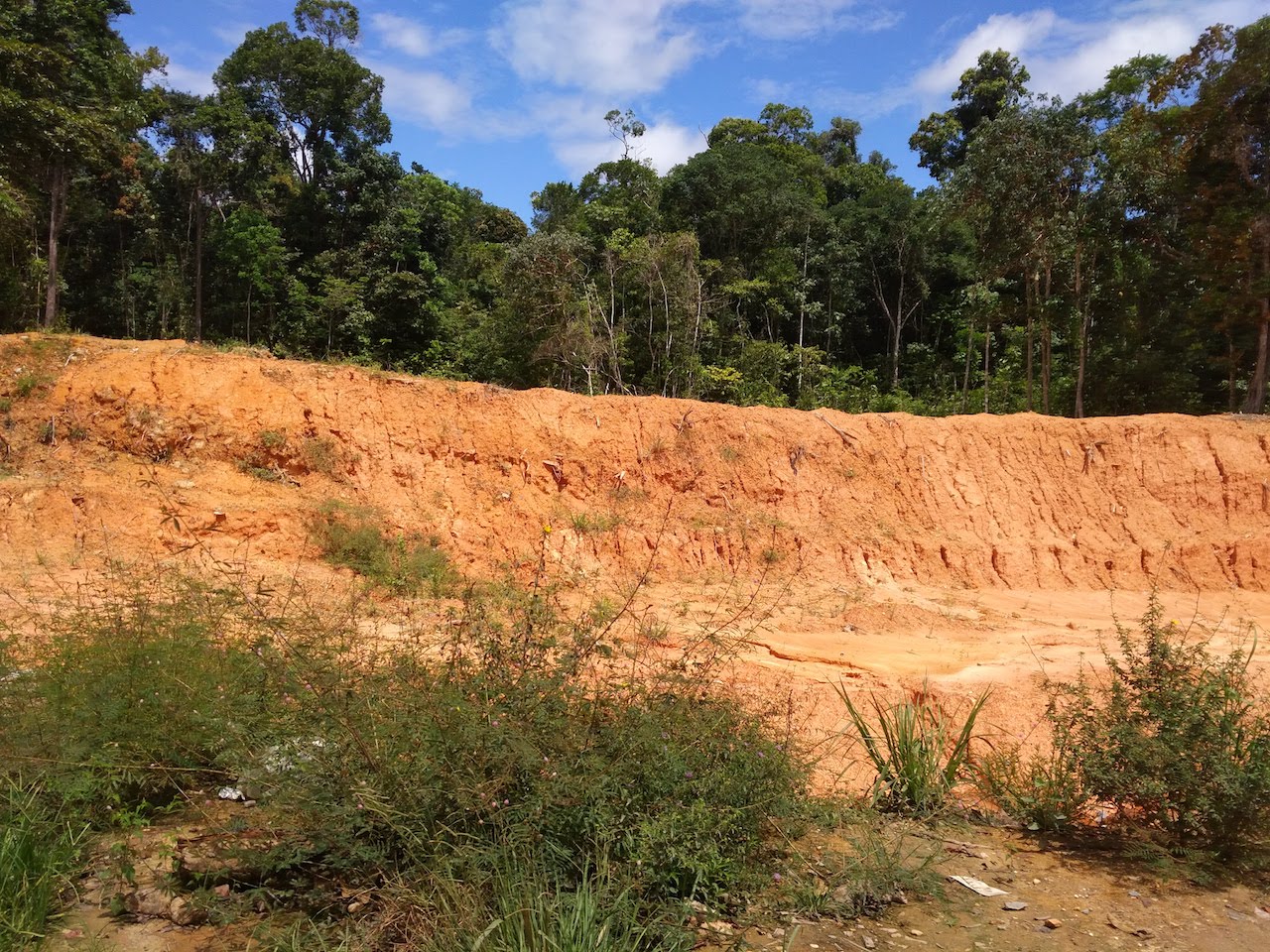
On the way, Photo: @highonthehog
Gold amalgamation is one of the oldest gold extraction methods. Mercury added to gold and silver ores creates an amalgam by contact with such metals. An amalgam is an extremely malleable metallic state that is not an alloy and the dissolved metals can be separated from the mercury by evaporating the amalgam. Myths And Realities In Artisanal Gold Mining Mercury Contamination
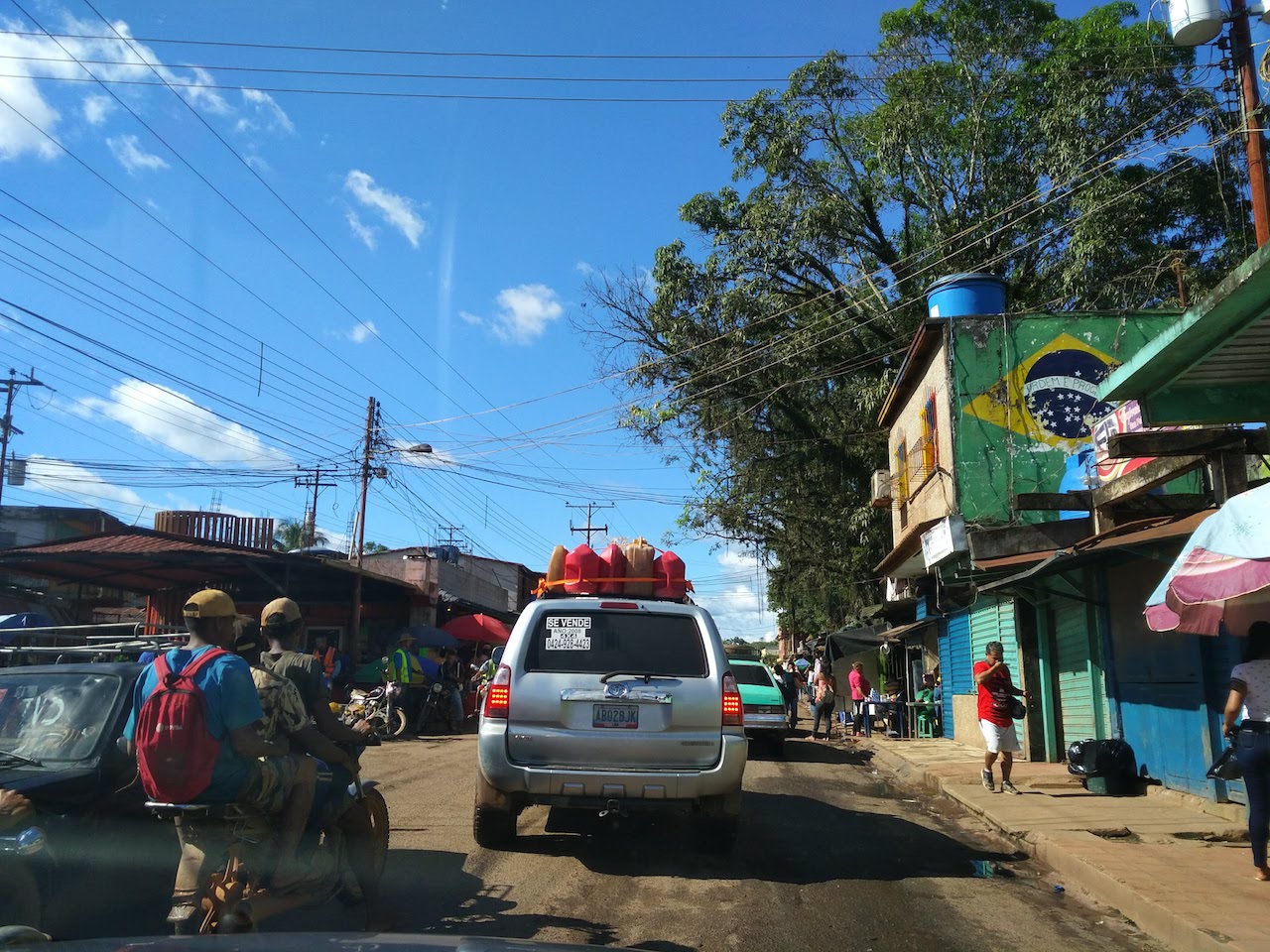
With a spare petrol, Photo: @highonthehog
Previous part here: The Myth Or Reality? El Dorado And The Bloody Grab for Gold in Venezuela
References
Photos: @highonthehog Images: sources linked below
-
Gustavo Angeloci Santos, Myths And Realities In Artisanal Gold Mining Mercury Contamination, The University Of British Columbia (Vancouver), 2013
-
Juan Friede, Geographical Ideas And The Conquest Of Venezuela, The Americas, Vol. 16, No. 2 Pp. 145-159, Cambridge University Press, 1959
-
U.S. Geological Survey And Corporacion Venezolana De Guayana, Tecnica Minera, C.A., Geology And Mineral Resource Assessment Of The Venezuelan Guayana Shield United States Government Printing Office, Washington, 1993
-
Helmut Waszkis, Mining in the Americas: Stories and History, Woodhead Publishing Limited, 1993

